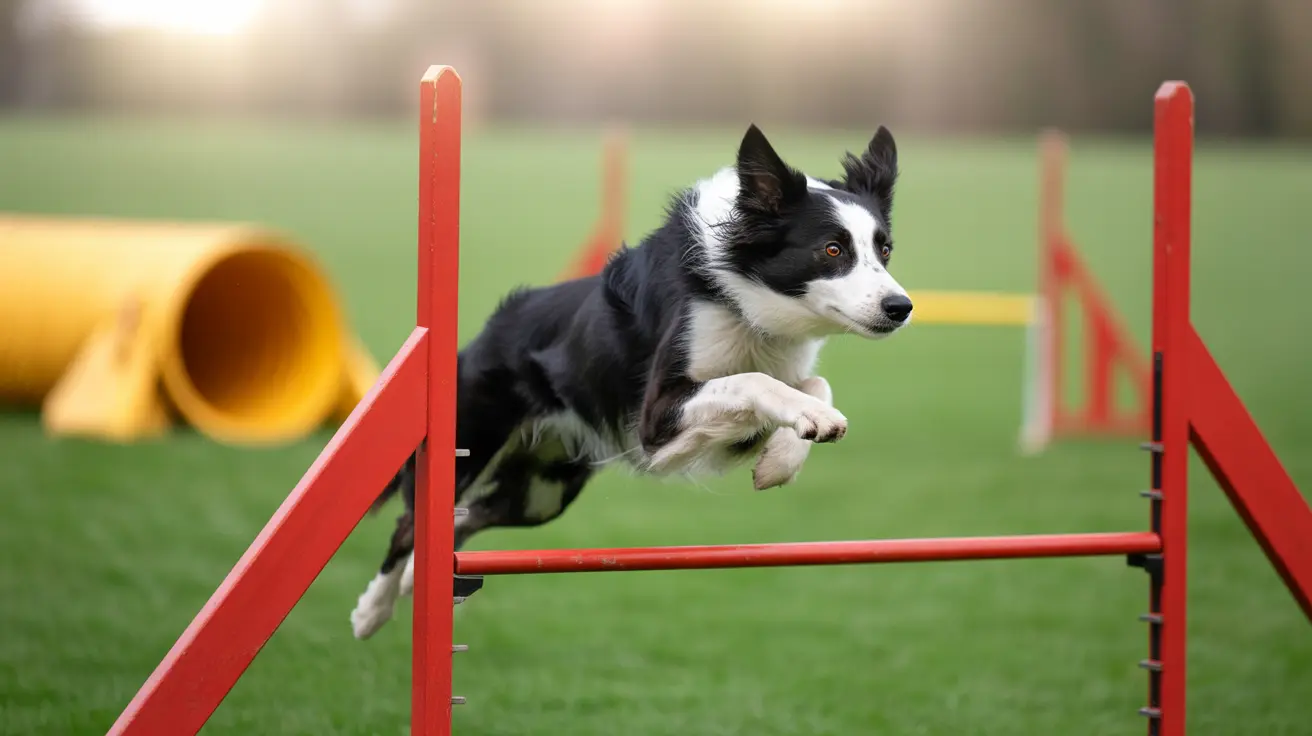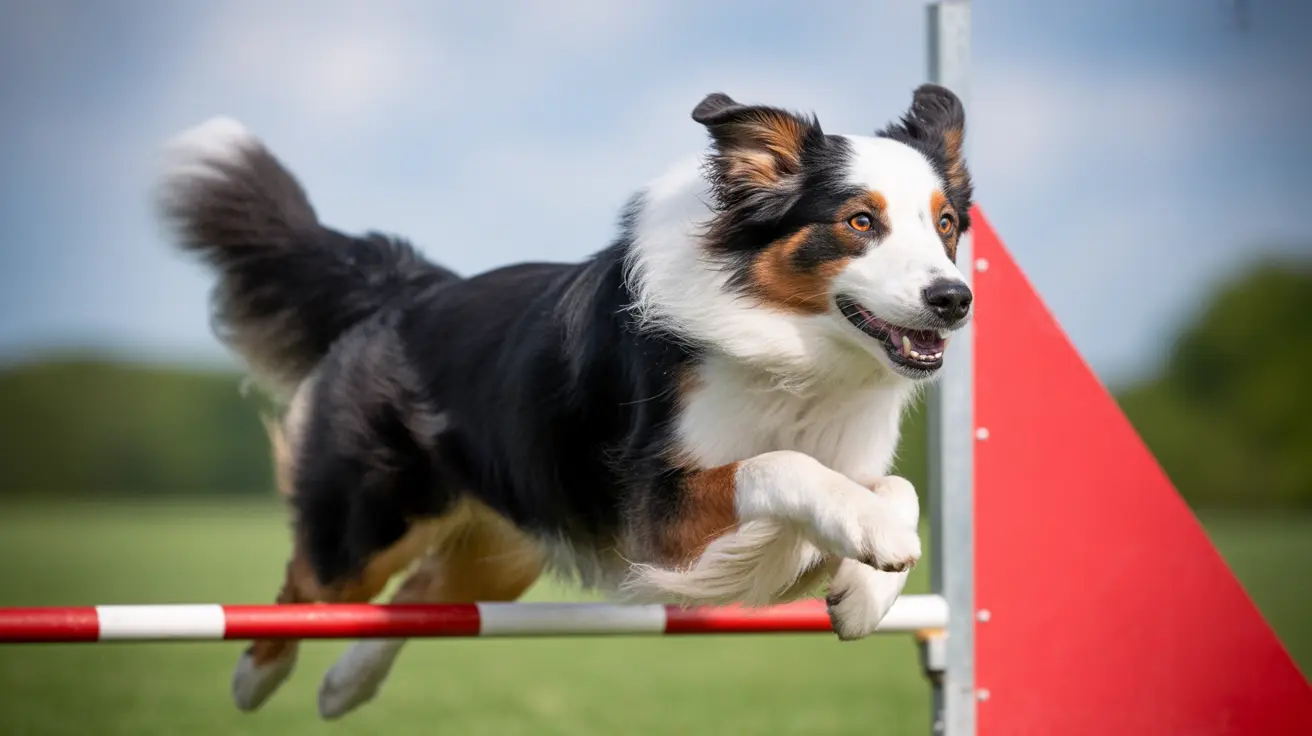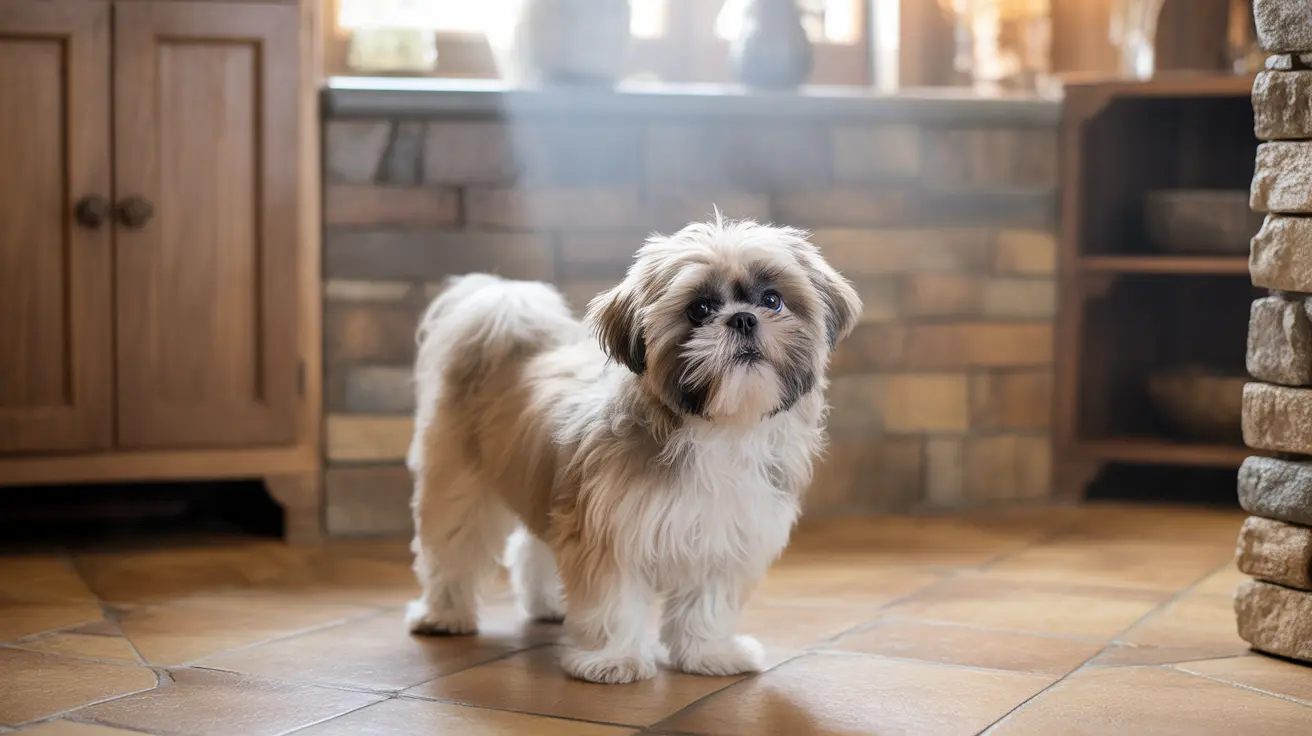Dog Sports Activities for Dogs and Owners: A Complete Guide to Active Canine Competitions
Dog sports activities for dogs and owners have revolutionized the way we bond with our canine companions, offering structured environments where both species can thrive physically and mentally. These competitive activities enhance the physical and mental health of dogs while providing essential exercise and stimulation that strengthens the unique bond between dog and handler. With numerous varieties suitable for different breeds and fitness levels, dog sports enable owners to discover activities their dogs genuinely enjoy, creating lasting partnerships built on trust, communication, and shared achievement.
The world of canine athletics extends far beyond basic obedience training, encompassing everything from high-energy agility courses to precise tracking exercises. Whether you're seeking fun ways to exercise your energetic Border Collie or looking for gentle activities suitable for your senior Golden Retriever, dog sports offer something for every team. Before embarking on this exciting journey, it's crucial to have a veterinary examination to ensure your dog is healthy enough to participate in your chosen activities.
High-Energy Dog Sports for Active Teams
Agility: The Ultimate Test of Teamwork
Agility stands as one of the most popular dog sports activities for dogs and owners, involving dogs navigating obstacle courses with jumps, tunnels, and walkways while being guided off-leash by their handlers through voice and body language alone. This sport is ideal for high-energy breeds but has been successfully adapted for almost all dogs, regardless of size or breed. The beauty of agility lies in its emphasis on communication and trust, as handlers must guide their dogs through complex courses without physical contact or food rewards during competition.
The obstacle courses typically include various challenges such as A-frames, dog walks, weave poles, tunnels, and jumps of different heights. Dogs and handlers work as a team to complete the course as quickly and accurately as possible, with penalties assessed for missed obstacles or knocked bars. This sport promotes exceptional teamwork and obedience while providing intense physical exercise for both participants.
Flyball: Fast-Paced Relay Racing
Flyball represents one of the most exciting team-oriented dog sports, functioning as a relay race where teams of dogs jump hurdles, trigger a ball release mechanism, and return with the ball while emphasizing speed and precision. This high-energy sport requires dogs to demonstrate exceptional focus and athleticism as they navigate a straight line of jumps before hitting a spring-loaded box that releases a tennis ball.
The competitive nature of flyball creates an electrifying atmosphere, with teams racing side-by-side on parallel courses. Dogs must possess quick reflexes, strong jumping ability, and unwavering focus on their task despite distractions from the competing team. The sport has gained tremendous popularity due to its spectator-friendly format and the obvious enthusiasm displayed by participating dogs.
Precision and Skill-Based Dog Sports
Tracking and Scent Work: Utilizing Natural Abilities
Tracking tests a dog's natural scenting ability to follow trails that mimic search-and-rescue missions, rewarding both skill and willingness to work. This sport capitalizes on dogs' incredible olfactory capabilities, with some competitions featuring trails that are hours or even days old. Dogs must demonstrate their ability to follow specific scent trails while ignoring distracting odors and environmental factors.
Scent work has evolved into various specialized disciplines, including competitive trailing, article searches, and area searches. These activities provide mental stimulation that can be as exhausting as physical exercise, making them excellent choices for dogs that need cognitive challenges. The sport emphasizes the dog's natural instincts while building confidence and independence.
Rally Obedience: Interactive Training Sport
Rally obedience involves teams navigating courses with signs that instruct specific obedience exercises, encouraging positive interaction between dogs and handlers while offering varying levels of difficulty. Unlike traditional obedience competitions, rally allows handlers to talk to their dogs, repeat commands, and use encouraging body language throughout the performance.
The courses feature stations with signs indicating different exercises, from basic sits and downs to more complex maneuvers like backing up, pivoting, or jumping. This sport provides an excellent introduction to competitive obedience while maintaining a fun, supportive atmosphere that builds confidence in both dog and handler.
Breed-Specific and Specialized Sports
Herding Trials: Honoring Working Heritage
Herding trials enable dogs with strong herding instincts, such as Collies and Shepherds, to demonstrate their skills in managing livestock under handler commands. These competitions test the dog's natural ability to control sheep, cattle, or ducks through a predetermined course within specific time constraints. The sport celebrates the working heritage of herding breeds while providing an outlet for their innate behaviors.
Competition levels range from basic started classes where dogs learn to move small groups of sheep in simple patterns, to advanced open classes featuring complex courses with multiple obstacles and challenging livestock management scenarios. Handlers must work at a distance, communicating with their dogs through whistle commands and verbal cues.
Lure Coursing: Satisfying the Chase Instinct
Lure coursing adapts the hunting chase experience using a mechanical lure system, allowing dogs—especially sighthounds—to chase prey-simulated targets across fields in competitive formats. This sport provides an outlet for breeds originally developed to hunt by sight, including Greyhounds, Whippets, Salukis, and other sighthound breeds.
The courses feature a continuous loop lure system that pulls plastic bags or other prey-simulating objects across varied terrain. Dogs are judged on their speed, agility, endurance, follow, and overall ability throughout the course. This sport allows sighthounds to express their natural hunting behaviors in a controlled, safe environment.
Dock Jumping: Water Sports Excellence
Dock jumping tests a dog's ability to leap off a dock into water, measuring either distance or height achievements. This sport has gained tremendous popularity among water-loving breeds like Retrievers, though dogs of all sizes and breeds can participate. The competition typically involves dogs running down a dock and launching themselves into a pool or body of water to retrieve a toy.
There are several disciplines within dock jumping, including Big Air (distance), Extreme Vertical (height), and Speed Retrieve (time-based retrieval). The sport provides excellent exercise while allowing dogs to engage in activities that many find naturally enjoyable and refreshing.
Creative and Artistic Dog Sports
Canine Freestyle: Dancing with Dogs
Canine freestyle, commonly known as dog dancing, involves choreographed routines set to music that showcase the dog's ability to perform tricks and complex movements such as twists, turns, and weaving through the handler's legs. This creative sport emphasizes the artistic partnership between dog and handler while celebrating the unique abilities of individual dogs.
Routines can incorporate elements from various training disciplines, including basic obedience, trick training, and even elements borrowed from other dog sports. The sport encourages creativity and allows teams to develop performances that highlight their specific strengths and interests, making it accessible to dogs with varying physical abilities.
Disc Dog: Precision and Athleticism
Disc dog competitions involve dogs catching flying discs thrown by handlers, with judging based on distance, accuracy, and creative freestyle routines. This sport combines athletic ability with precision timing, as dogs must judge the flight path of the disc while maintaining speed and agility to make spectacular catches.
Competition formats include distance/accuracy events where points are awarded based on catching discs at various marked distances, and freestyle routines where teams perform choreographed sequences incorporating multiple discs, tricks, and creative elements. The sport appeals to dogs with strong prey drive and natural jumping ability.
Strength and Endurance Sports
Canicross and Pulling Sports
Canicross combines running with dogs connected via specialized harnesses and elastic leashes, with variations including bikejoring (dogs pulling bicycles) and skijoring (dogs pulling humans on skis). These sports require dogs to demonstrate strength, endurance, and trust while working in partnership with their handlers over various terrains and distances.
Pulling sports encompass various disciplines where dogs pull heavy loads or assist human mobility, requiring exceptional strength and cardiovascular fitness. These activities celebrate the working heritage of various breeds while providing intense physical exercise that benefits both participants. Proper equipment and gradual conditioning are essential for safe participation in these demanding sports.
Benefits and Training Considerations
Physical and Mental Health Advantages
The benefits of dog sports encompass dramatically improved physical health, including enhanced muscle tone and effective weight management, while also providing crucial behavioral improvements through mental stimulation that reduces destructive activities. Regular participation in dog sports activities creates stronger, healthier dogs with better cardiovascular fitness, improved coordination, and increased flexibility.
Beyond physical benefits, dog sports provide essential mental stimulation that challenges dogs intellectually and helps prevent behavioral problems associated with boredom. The structured training and competition environment also enhances communication and trust between dog and handler, creating deeper bonds and more responsive partnerships.
Training Philosophy and Approach
Training for dog sports should always employ positive reinforcement methods without punishment, as this approach builds confidence and enthusiasm while maintaining the dog's natural eagerness to participate. Basic obedience skills and attention training facilitate better performance across all disciplines, providing the foundation upon which sport-specific skills are built.
Mistakes should be viewed as learning opportunities rather than failures, with enjoyment and teamwork remaining the primary goals over competition results. This philosophy ensures that both dogs and handlers maintain their enthusiasm for the sport while developing skills at an appropriate pace.
Getting Started and Finding Your Sport
Accessibility Across Ages and Breeds
Dog sports activities for dogs and owners are accessible to various breeds and ages, though special considerations should be taken for puppies, who should focus on bonding and basic coordination rather than intensive training, and older dogs, who benefit from choosing low-impact activities that accommodate their changing physical needs.
The key to success lies in matching the sport to both the dog's physical capabilities and natural interests. High-energy breeds may excel in agility or flyball, while dogs with strong scenting abilities might prefer tracking or barn hunt competitions. Even dogs with physical limitations can often participate in modified versions of various sports or find disciplines that work within their capabilities.
Organizations and Community Involvement
Many established dog sports organizations and associations worldwide facilitate competitions, training opportunities, and events, including the American Kennel Club (AKC), United Kennel Club (UKC), North American Flyball Association (NAFA), North American Dog Agility Council (NADAC), and numerous specialized organizations dedicated to specific disciplines like scent work, dock diving, and lure coursing.
Owners can participate in local clubs and training classes to explore different sports and find activities that best match their dog's traits and their own interests. These organizations provide structured learning environments, access to qualified instructors, and opportunities to meet other enthusiasts who share similar interests in canine athletics.
Frequently Asked Questions
What age should my dog be to start dog sports?
Dogs can begin basic training and socialization for dog sports as early as puppyhood, typically around 4-6 months old. However, high-impact activities like agility jumps should wait until growth plates close, usually around 12-18 months depending on the breed. Puppies can learn foundational skills, basic obedience, and coordination exercises that will benefit them in future sport participation.
Are certain dog breeds better suited for specific sports?
Yes, certain breeds have natural advantages in specific sports due to their original breeding purposes. Herding breeds excel in agility and herding trials, sighthounds are naturally suited for lure coursing, and water breeds like Retrievers often dominate dock jumping. However, mixed breeds and dogs outside these categories can still participate successfully with proper training and enthusiasm.
How do I know if my dog is physically ready for dog sports?
Before starting any dog sport, schedule a veterinary examination to ensure your dog is healthy enough to participate. Look for signs of enthusiasm during basic training, good attention span, and willingness to learn new commands. Start with low-impact activities and gradually increase intensity based on your dog's response and physical condition.
What equipment do I need to get started in dog sports?
Basic equipment varies by sport but typically includes a properly fitted collar or harness, a reliable leash, treats for positive reinforcement, and sport-specific gear. Agility requires jumps and obstacles, dock jumping needs access to water facilities, and tracking requires scent articles and tracking leads. Many clubs provide equipment for beginners to try different sports before investing in personal gear.
How much time should I dedicate to training for dog sports?
Training time varies depending on the sport and your goals. Recreational participation may require 2-3 training sessions per week lasting 15-30 minutes each, while competitive training might involve daily practice sessions. The key is consistency rather than duration, with short, positive training sessions typically more effective than longer, stressful ones.
Can senior dogs participate in dog sports?
Senior dogs can absolutely participate in dog sports with appropriate modifications and veterinary approval. Low-impact activities like rally obedience, basic scent work, and modified agility courses can provide mental stimulation and gentle exercise. The key is choosing activities that accommodate any physical limitations while still providing enjoyment and engagement.
How do I find local dog sports clubs and training opportunities?
Contact national organizations like the AKC or UKC for referrals to local clubs, search online for breed-specific clubs in your area, and check with local pet stores, veterinary offices, and dog training facilities for recommendations. Many clubs welcome visitors to observe training sessions or competitions before committing to participation.
Conclusion
Dog sports activities for dogs and owners offer an incredible opportunity to strengthen bonds while promoting physical fitness and mental stimulation for both participants. From the precise teamwork required in agility to the natural instincts celebrated in herding trials, these activities provide structured outlets for dogs' energy and intelligence while creating rewarding partnerships between species. The diverse range of available sports ensures that every dog-owner team can find activities that match their interests, abilities, and lifestyle.
The journey into dog sports begins with understanding your dog's natural inclinations and physical capabilities, then finding local resources and communities that support learning and growth. With proper veterinary clearance, positive training methods, and a focus on enjoyment over competition, dog sports can provide years of healthy activity and deeper connection with your canine companion. Whether your goals include recreational fun or competitive achievement, these activities offer a rewarding way to build a deep working partnership while promoting canine health and enjoying quality time together.






